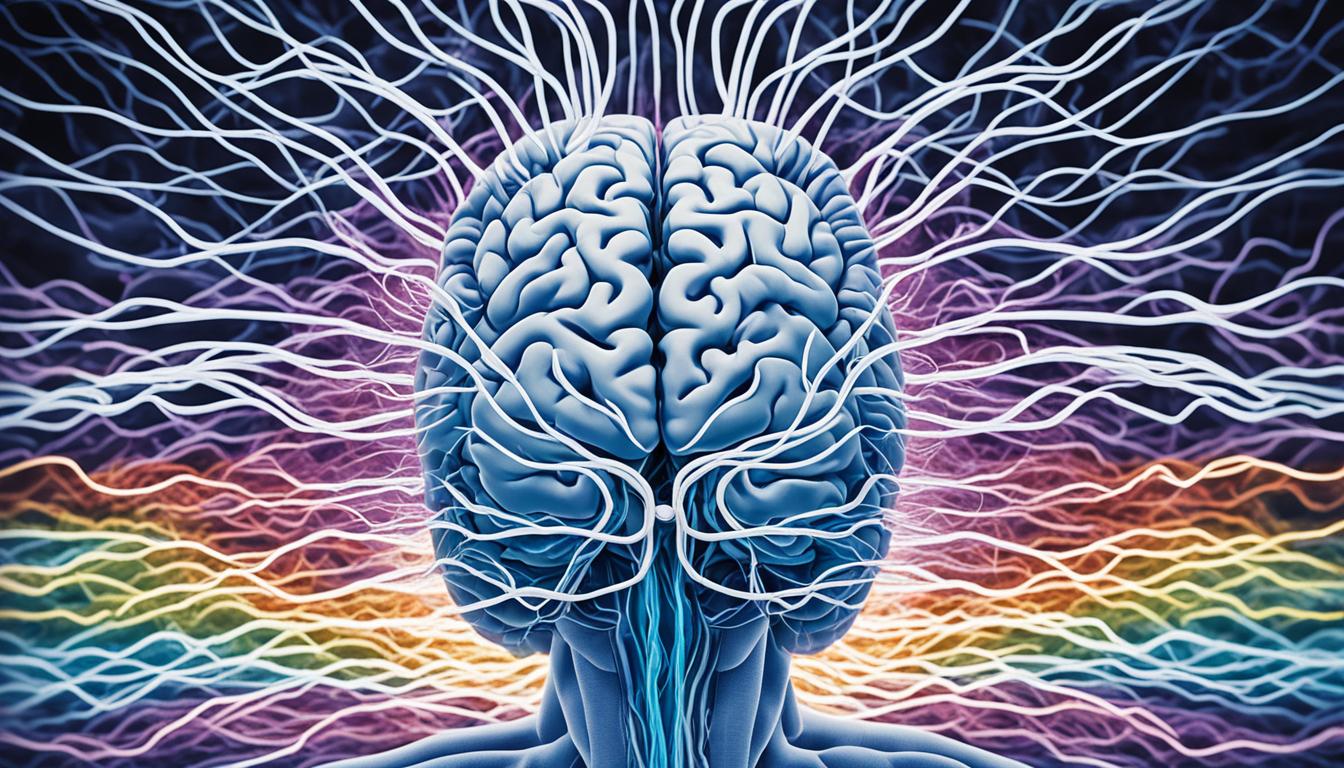Seizure absence, also called absence seizures or childhood absence epilepsy, causes sudden episodes of unconsciousness. These episodes are brief, typically lasting for a few seconds to a minute. They might come with a blank stare or repetitive movements. This condition is common in kids aged 4 to 14.
The cause of absence seizures isn’t fully understood. However, they are linked to unusual brain electrical activity. Doctors diagnose them by spotting their unique symptoms. This might involve tests like an EEG. Treatment usually involves anti-seizure drugs but can sometimes require surgery.
Stem cell therapy is a new frontier in treating seizure disorders, like absence seizures. Studies suggest that stem cells can help fix brain damage. They might also help control the abnormal brain activity. This offers a possible new way to treat these disorders.
Key Takeaways:
- Absence seizures, also known as seizure absence or childhood absence epilepsy, are characterized by sudden, brief episodes of unconsciousness or altered consciousness.
- These seizures typically last for a few seconds to a minute and are often accompanied by a blank stare or repetitive movements.
- Absence seizures are most commonly seen in children between the ages of 4 and 14.
- The exact cause of absence seizures is unknown, but they are believed to be related to abnormal electrical activity in the brain.
- Diagnosis of absence seizures is based on observation of the characteristic symptoms and may involve additional tests such as an electroencephalogram (EEG).
Types and Symptoms of Seizure Absence
Seizure absence is a type of epilepsy with different types and symptoms. It’s key to know these for proper diagnosis and treatment. Let’s look at the three main types and their symptoms.
Focal Onset Seizures
These seizures start in one part of the brain. There are two types: where the person knows what’s happening and when they don’t. Absence seizures are different. They impact both sides of the brain at once.
Generalized Onset Seizures
These seizures affect both sides of the brain together. There are many kinds, including ones that make muscles stiff or make you jerk. But, absence seizures are special, as they cause a brief loss of awareness. They are also called petit mal seizures.
In an absence seizure, people might suddenly lose focus for a short time. They might look like they’re staring at something. Other symptoms can include Blinking a lot, moving their lips, or hands. These moments of not being aware can disrupt their day, even though they’re short.
People show different signs and these may change. It’s crucial to talk to a doctor for the right treatment, specific to each person’s condition.
| Types of Seizure Absence | Symptoms |
|---|---|
| Focal Onset Seizures | * Focal aware seizures: Consciousness stays during the seizure. |
| * Focal impaired-awareness seizures: There’s a temporary loss of consciousness. | |
| Generalized Onset Seizures | * Tonic seizures: Muscles stiffen, often leading to falls. |
| * Clonic seizures: Muscles shake back and forth. | |
| * Tonic-Clonic seizures: A mix of muscle stiffening and shaking. | |
| * Myoclonic seizures: Muscles jerk suddenly. | |
| * Absence seizures: Briefly, not aware or staring. | |
| * Atonic seizures: Muscles suddenly go weak, leading to falls. |
Knowing about each type of seizure absence is critical. It helps with diagnosing and finding the best treatment. Working with doctors closely ensures the best care for you or a loved one.
Diagnosis and Treatment of Seizure Absence
Doctors diagnose seizure absence mainly by watching for its key symptoms. These include brief times when the person seems to turn off and stare. They might also do tests like an EEG and brain scans, using a CT scan or MRI. This helps confirm the diagnosis and rule out other problems.
After diagnosis, managing seizure absence often means using medicines. The main ones are ethosuximide, valproic acid, and lamotrigine. Which medicine to use depends on the person’s health, age, and the seizures they have. Sometimes, if drugs don’t work well, surgery might be an option.
Stem cell therapy could be a key player in the future of treating seizure issues. This includes seizure absence. But, we need more study to fully grasp its benefits and risks.

